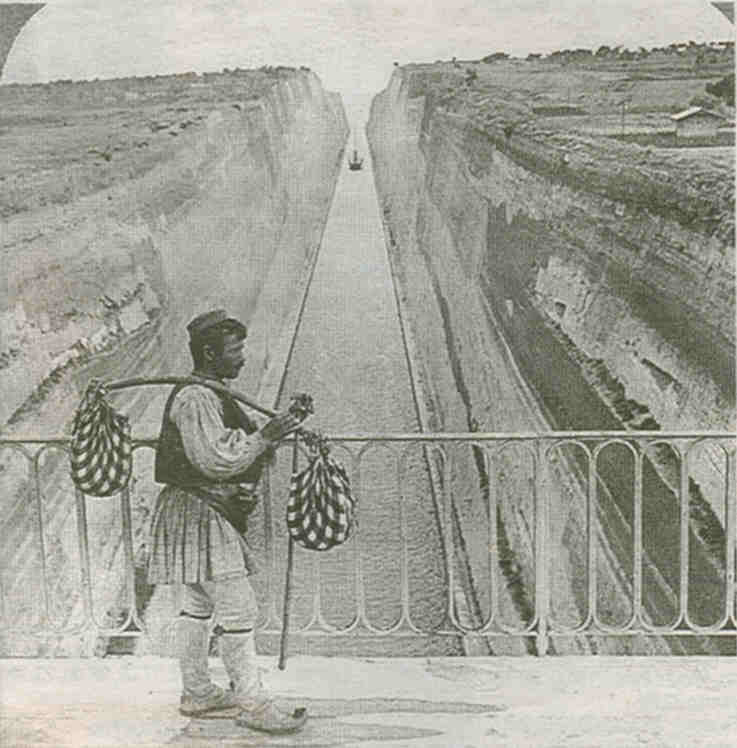 |
||
|
Greek American Journeys
|
||
|
'The Journey' captures images of Greeks balanced between the Old and New World MARIA Iliou's documentary The Journey: The Greek American Dream resurrects images and stories that had been scattered and buried by time. While in the US on a Fulbright scholarship researching her next film, the director of Greek diaspora love story Alexandria found photographs at the Ellis Island archives that triggered the discovery of previously unseen footage. The resulting film, a collaboration with historian Alexander Kitroeff, is an ambitious project divided into three parts; the period of 1890-1920, when 400,000 Greeks immigrated to the US; 1920-1960, when Greeks settled into the New World; and finally, 1960-1980, the time marked by the children of immigrants consciously tackling their ethnic past. |
 Previously unseen images of Greek immigrants are seen in Maria Iliou's documentary |
|
The documentary manages to be very streamlined for something with such a broad span. While often sentimental in tone, with the help of its soundtrack, The Journey also delivers lots of historical context and detail and a strong sense of the difficulties and the divided nature of Greek identity in the US. Interviews with articulate Greek and Greek American scholars, politicians and writers keep the film from being too broad and personalise the experience. "Greece was downstairs and America upstairs," notes writer and ship financier Elias Kulukundis of his divided cultural identity. Labour writer and Cineaste editor Dan Georgakas speaks of his generation, which "understood we had lost something and we had gained something". Poet Olga Broumas reflects on the relatively more liberated situation of Greek women in the US vs their Greek counterparts in the early 20th century. Modern Greece scholar Artemis Leontis recalls how her mother put a prejudiced teacher in his place by offering a list of words with Greek origins. Crime writer George Pelecanos talks about how he appreciates the Greek community more now that he has his own kids. Iliou's black-and-white archival finds of the very first decades of Greeks in America are most impressive, from a shot of men munching on what looks like their first American hotdogs to images of children and women in the Lowell, Massachusetts textile mills. Nearly 50 archival sources were used on the documentary, ranging from the National Archives and the Library of Congress to smaller archives like the Vlastos Papers and the Lowell Hellenic Heritage Association. "There were two of us at first," Iliou explains, "but many researchers became involved." In the film, the viewer learns of shoeshine boys taking shifts sleeping in the same beds and of Kalymnos sponge divers who introduced higher-tech methods of sponge harvesting to Florida. The Journey covers the history of Hellenic publications and politics in America, be it Greek strike-breakers and labour activists, Venizelists or royalists. While the film is mainstream in the sense that it offers a positive slant on the often arduous Greek American struggle to succeed, it also hints at a darker side to the immigrant community's gains. While Greeks may have formed the American Hellenic Educational Progressive Association (AHEP A) in response to supremacist groups like the Ku Klux Klan, the film points out that they often benefited in a way from the plight of African-Americans when they were considered relatively more "white" during World War Two. The film feels compelled to mention touchstones like singer Maria Callas and Pap smear originator George Papanicolaou, but in passing only. And it seems yo only capture the broadening and diversifying nature of the Greek American community between 1960 and 1980. Nonetheless, teh film functions as an arc that avoids familiar cliches and collects within itself many parts of a complex history and I'll be recommending it to family on both sides of the understanding of who we Greek Americans are. AngeIike Contis The Voyage has daily and evening Benaki Museum's Amphitheater (1 Koubari St, tel 210-3671000) through to February 25, as well as at the Hellenic American Union (22 Massalias St, 210-368-0900) on february 6, 13,20 and 27 at 8pm. It will be shown on Greece's Parliament (Vouli) Television in February at New York's Metropolitan Museum of Art on May 15. |
||
|
|
||
(Posting Date 19 June 2007) HCS readers can view other excellent articles by this writer in the News & Issues and other sections of our extensive, permanent archives at the URL http://www.helleniccomserve.com./contents.html
All articles of Athens News appearing on HCS have been reprinted with permission. |
||
|
||
|
2000 © Hellenic Communication Service, L.L.C. All Rights Reserved. http://www.HellenicComServe.com |
||

